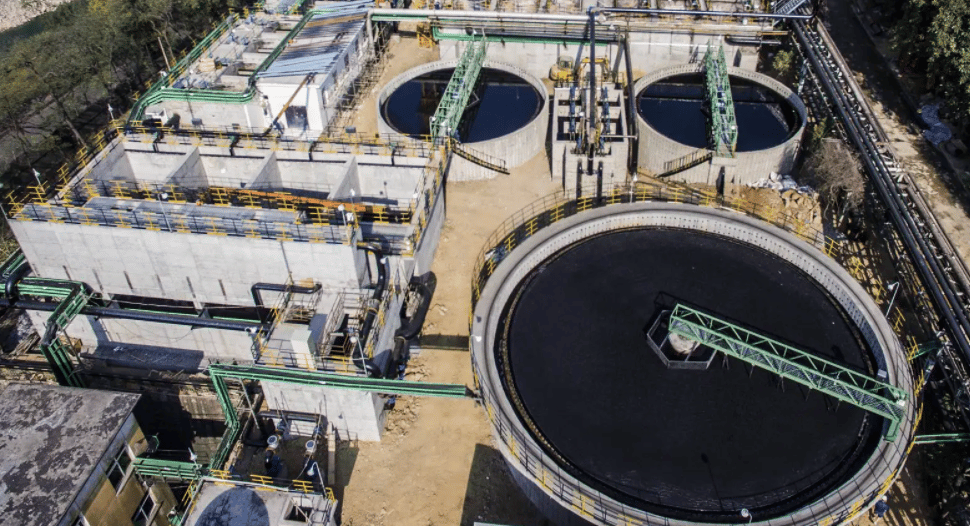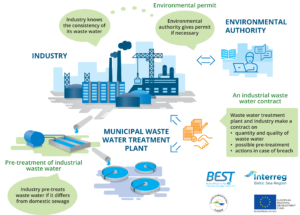Industrial Waste Water Treatment-- Advanced Solutions for Cleaner Effluents
Industrial Waste Water Treatment-- Advanced Solutions for Cleaner Effluents
Blog Article
Difficulties and Solutions in Hazardous Waste Water Treatment
The treatment of commercial wastewater offers a diverse array of difficulties, ranging from rigid governing conformity to the intricacies of price monitoring and technical restrictions. The variability in waste make-up additionally complicates the effectiveness of traditional treatment approaches, usually resulting in intensified operational expenses.
Regulatory Compliance Challenges
Just how can industrial facilities browse the complex landscape of governing conformity in wastewater treatment? The governing framework controling wastewater administration is multifaceted, usually varying by territory and kind of industry. Facilities needs to adhere to government, state, and local laws that dictate effluent top quality criteria, discharge restrictions, and tracking needs. Failure to abide can result in extreme penalties, consisting of fines and operational closures.
To effectively handle these conformity challenges, facilities need to implement robust surveillance and reporting systems that ensure real-time data collection and evaluation. Normal audits and risk assessments can determine possible compliance gaps, permitting aggressive changes in treatment processes. Worker training programs concentrating on governing knowledge and best methods are crucial to cultivate a culture of compliance within the organization.
In addition, engaging with governing agencies can supply valuable understandings and make clear uncertain laws. Facilities may likewise take advantage of talking to ecological experts who concentrate on wastewater treatment compliance, guaranteeing that they remain informed of developing laws. By adopting these methods, commercial facilities can not only satisfy conformity requirements however additionally boost their operational effectiveness and ecological stewardship.
Price and Financial Barriers
Navigating regulative conformity in wastewater therapy frequently provides considerable economic challenges for industrial facilities. The expenses connected with applying necessary treatment technologies, preserving compliance with rigid guidelines, and taking care of functional expenditures can be discouraging. Many organizations face high preliminary capital expenditures for the building or upgrading of wastewater treatment plants, which may strain budgets, especially for medium-sized and small enterprises.
Furthermore, ongoing operational prices, consisting of chemical, labor, and maintenance inputs, add to the economic worry. The changability of changing power costs and the prospective need for additional financial investments to fulfill progressing guidelines intensify these economic stress. In most cases, the lack of financial motivations or assistance from government bodies makes it much more tough for services to justify financial investments in innovative treatment systems.
Additionally, the financial feasibility of wastewater treatment remedies is commonly questioned, particularly for sectors with tight earnings margins. It is essential for industrial facilities to check out cost-efficient techniques, such as adopting cutting-edge funding options, engaging in collaborations, and leveraging arising modern technologies that can help alleviate these economic barriers while making certain compliance with ecological standards.

Technical Limitations
Countless technical restrictions hinder the effectiveness of commercial wastewater therapy processes. One substantial obstacle is the inadequacy of existing treatment modern technologies to attend to complicated contaminants. Several traditional methods, such as turned on sludge and chemical rainfall, deal with the elimination of emerging pollutants, including drugs and microplastics. This limitation usually leads to the discharge of inadequately dealt with water, which can have detrimental ecological impacts.
In addition, the scalability of treatment modern technologies positions an obstacle. While some advanced approaches, like membrane filtering or innovative oxidation, show pledge in controlled atmospheres, their execution on a larger scale can be much too expensive and technically tough. Maintenance and operational intricacies better make complex the adoption of these systems, particularly for smaller sized industries with restricted technological proficiency.
The combination of real-time surveillance technologies also stays inadequate in several treatment facilities. Without effective tracking systems, operators can not appropriately assess treatment effectiveness visit this site or find possible failings, leading to inconsistent effluent quality. As a result, attending to these technical restrictions via r & d, along with investment in innovative options, is essential for improving the efficacy of commercial wastewater therapy and making certain governing conformity. Industrial Waste Water Treatment.
Irregularity in Waste Structure
In the realm of industrial wastewater therapy, the irregularity in waste structure presents an awesome difficulty. Industries produce wastewater with diverse features, affected Related Site by elements such as production procedures, basic materials, and operational techniques. This heterogeneity complicates the therapy procedure, as conventional systems often battle to successfully deal with the variety of contaminants existing.
For example, wastewater from food handling may include high degrees of raw material, while effluents from chemical production could consist of dangerous materials and heavy steels. This variation necessitates versatile treatment strategies to guarantee conformity with environmental laws and safeguard public wellness. Additionally, variations in waste composition can happen over time, affected by adjustments in production timetables, maintenance activities, or the intro of new products.

Cutting-edge Treatment Solutions
Ingenious treatment options are important for resolving the complexities of commercial wastewater monitoring. Conventional approaches frequently drop short in efficiently getting rid of a vast array of contaminants, especially in centers with varied effluent streams. Recent improvements concentrate on integrating advanced modern technologies to enhance treatment effectiveness and sustainability.
One encouraging approach is using innovative oxidation procedures (AOPs), which leverage powerful oxidants to deteriorate natural toxins. AOPs, consisting of photocatalysis and ozonation, can considerably minimize poisonous materials and improve effluent quality. Furthermore, membrane layer bioreactor (MBR) technology has acquired traction, integrating organic therapy with membrane layer purification, causing high-quality effluent and decreased footprint.
One more ingenious service is the application of resource healing systems. Methods like anaerobic digestion not only treat wastewater but also produce biogas, click site which can be harnessed as a renewable resource resource. The fostering of man-made intelligence and machine learning versions can enhance treatment procedures by forecasting variations in wastewater composition, therefore boosting operational efficiency.
These cutting-edge options not only address governing conformity but additionally advertise environmental sustainability, leading the way for a more resistant and effective industrial ecosystem.
Verdict
Finally, addressing the obstacles of industrial wastewater therapy needs a complex method that incorporates regulative conformity, expense monitoring, and technological innovations. Ingenious remedies, such as sophisticated oxidation procedures and membrane bioreactor modern technology, offer paths to boost treatment efficiency. Real-time tracking systems and collaborative interaction with governing agencies can promote lasting techniques while mitigating economic stress. A dedication to continuous enhancement in therapy methodologies will ultimately add to the reliable management of industrial wastewater and environmental security.
The therapy of industrial wastewater presents a multifaceted range of difficulties, ranging from strict regulative compliance to the complexities of cost management and technological limitations. Industrial Waste Water Treatment.Navigating governing conformity in wastewater therapy commonly provides considerable monetary challenges for industrial centers. Resolving these technical restrictions with research and development, along with financial investment in ingenious services, is essential for enhancing the efficiency of commercial wastewater treatment and ensuring governing conformity
Wastewater treatment centers need to invest in robust surveillance systems and versatile treatment modern technologies capable of accommodating differing influent attributes.In conclusion, resolving the difficulties of industrial wastewater therapy needs a multifaceted technique that integrates governing compliance, price administration, and technological innovations.
Report this page